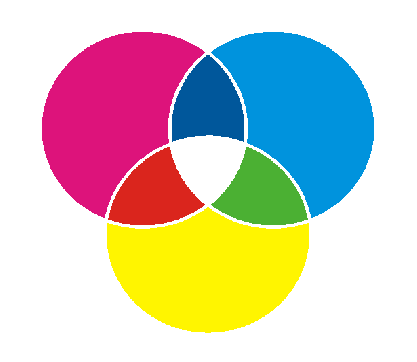Yellow may be be produced by mixing red and green light but it is not possible to produce any of red, blue or green light by mixing two other colours. For this reason red, blue and green are called primary colours.
Secondary colours may be produced by mixing the primary colours. Yellow is a secondary colour, made by mixing red and green light. The other two secondary colours are cyan, made by mixing green and blue light, and magenta, made by mixing red and blue light.
The effect of mixing different colours may be investigated with projector and coloured filters. Red, green and blue mix to give white, provided the right shade of each colour are used and that the colours are mixed in the correct proportions.
Using projectors and filters, the following may be verified:
Red + Green = Yellow
Red + Blue = Magenta
Blue + Green = Cyan
These results, together with the knowledge that a mixture of the three primaries – red, green and blue – gives white, leads us to expect that
Red + Cyan = White
Green + Magenta = White
Blue + Yellow = White
Two colours which combine to give white are called complementary colours.
The diagram below is a convenient summary.

